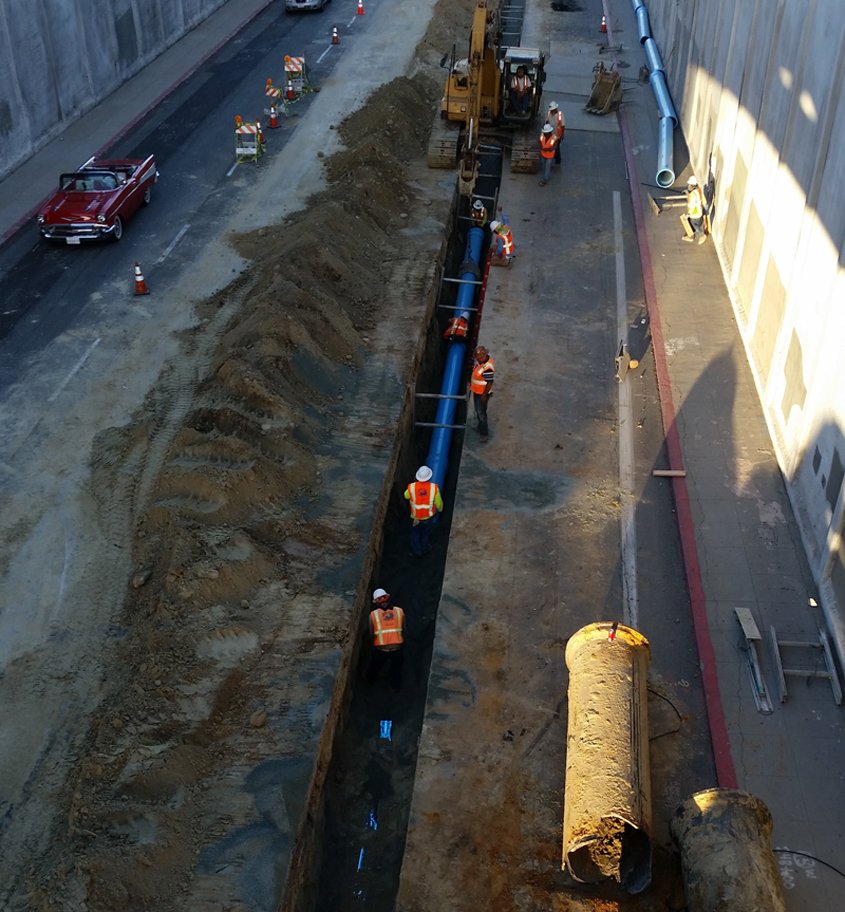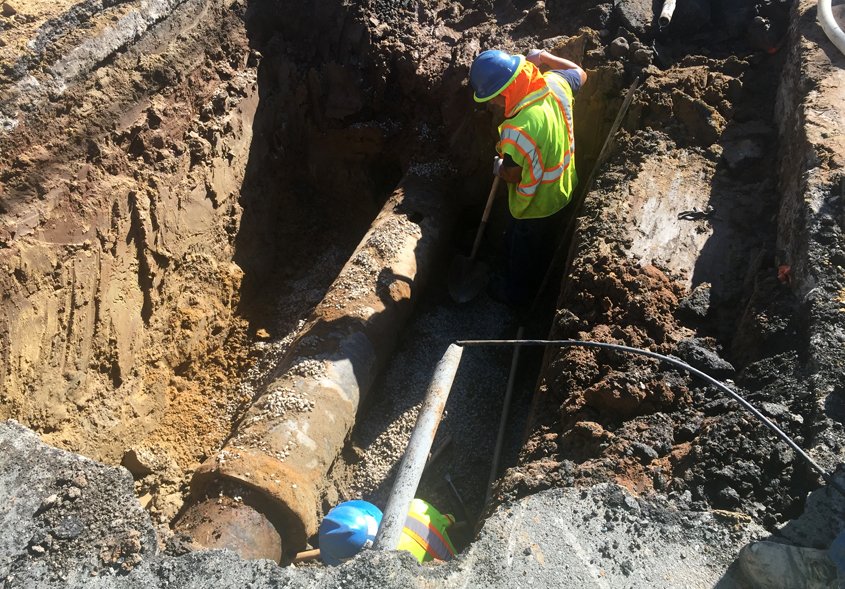San Diego Will Have to Hope for a ‘March Miracle’ to Make Up for Lack of Rain
It’s time to hope for a “March miracle.” We badly need rain and won’t get much — if any — over the next week.
It’s time to hope for a “March miracle.” We badly need rain and won’t get much — if any — over the next week.
The City of San Diego Planning Department is seeking public feedback as it develops a climate resilience plan focused on preparing for sea level rise, flooding and drought, extreme heat and wildfires — risks backed up by a climate change vulnerability assessment completed early last year. The Climate Resilient SD plan would build on the city’s Climate Action Plan released in 2015.
Reports of Tijuana sewage leaking over the border into the San Diego region stretch back at least to the 1930s. The fundamental issue hasn’t changed all that much over time. Plumbing still isn’t keeping pace with population growth. Water officials in Baja California have frequently pointed out that sewage collection in Tijuana far exceeds that in many parts of Mexico.
Increased maintenance efforts by the City of San Diego of its water system infrastructure is paying off for ratepayers. For the fourth year in a row, the number of water main breaks has decreased in the City of San Diego. Thirty-three water main breaks were reported in 2020, the lowest total in more than 15 years.
The City credits its aggressive multi-year program to replace aging pipelines for bringing the numbers far below the peak of 131 breaks in 2010.
“The City’s Public Utilities Department has worked very hard to improve the reliability of our water system infrastructure,” said Shauna Lorance, director of public utilities. “Our citizens benefit greatly from fewer main breaks because it means less water loss and lower emergency repair costs.”

Crews replace old cast iron pipe with new PVC pipe along Park Boulevard. Photo: City of San Diego
San Diego’s continuing program to replace old cast iron water mains has played a major part in the decrease in breaks. Some cast-iron pipes had been in service for more than a century. Since 2013, the city has replaced approximately 180 miles of water pipelines. By 2025, the last 55 miles of cast iron water mains are scheduled to be replaced with water mains made of durable polyvinyl chloride.
Water infrastructure maintenance programs also deliver a benefit to our region’s overall economy. According to the Economic Policy Institute, $188.4 billion spent on water infrastructure investments over five years would yield $265 billion in economic activity and create 1.9 million jobs.
“Improving and maintaining our water infrastructure is an important part of our commitment to serving our customers,” said Lorance. “We will continue to provide reliable water services our customers deserve.”

City of San Diego public utilities crew members replace an aging cast iron water pipe at 5th and Robinson in Hillcrest. Photo: City of San Diego
City of San Diego public utilities crews routinely oversee preventative maintenance work to help determine potential leaks and breaks before they occur. Private contractors have completed the bulk of the pipeline replacement projects under the direction of the City’s Engineering and Capital Projects Department.
San Diego is experiencing one of the driest Februaries it has had in nearly 170 years due to weather patterns that are sending most winter storms into the Pacific Northwest and Northern California rather than allowing them to drop south, says the National Weather Service.
Tish Berge is joining the San Diego County Water Authority as assistant general manager, bringing experience from every aspect of water utility management to serve the region, it was announced Thursday. Berge is general manager of the Sweetwater Authority, one of the water authority’s 24 member agencies. Berge starts her new role Feb. 22 alongside Deputy General Manager Dan Denham and General Manager Sandra L. Kerl.
Over two decades, I’ve watched opponents resist San Vicente Dam, the Carlsbad Desalination Plant, Olivenhain Reservoir, San Diego Pure Water and other projects because they refused a meaningful, fact-based dialogue. Thankfully, in each of those cases, a rational, long-term approach to securing our future prevailed.
A new report finds that nearly 70,000 San Diego families are behind on their water bills during the pandemic, with more than 11,000 owing over a thousand dollars.
That same study by the state’s Water Resources Control Board finds that one in eight California households are behind on their water bills: a a tsunami of debt adding up to more than a billion dollars.
Greater San Diego could get 1.5 inches of rain from an “atmospheric river” weather system that will flow ashore Thursday night and last through Friday, when it also will leave a few inches of snow on the county’s highest mountain peaks, says the National Weather Service.
Buried in San Diego County’s lagoons are centuries worth of carbon, cached in muddy stockpiles that scientists say could help combat climate change. Recently, scientists with the conservation organization Wildcoast and Scripps Institution of Oceanography started studying how much carbon coastal wetlands can capture, and how to restore these environments to boost that capacity.
